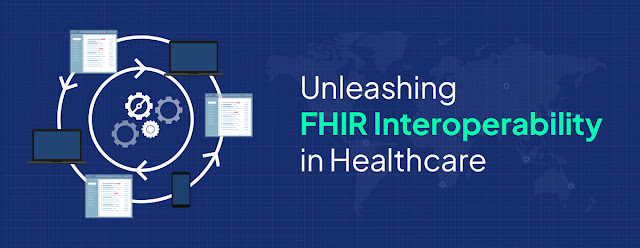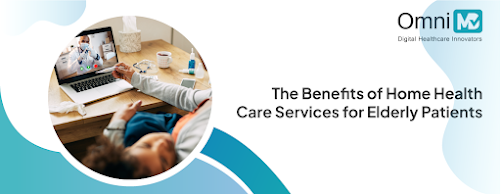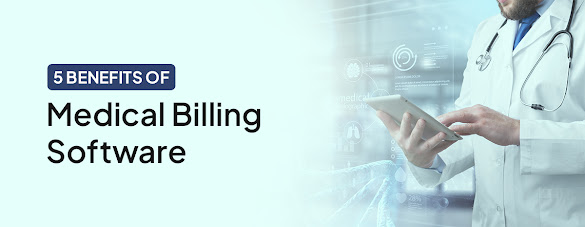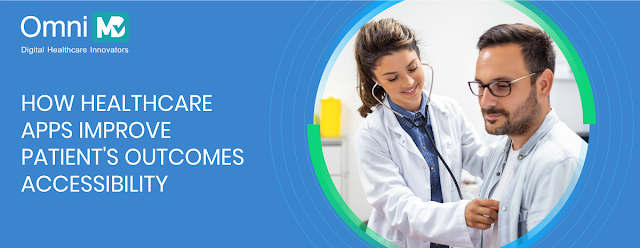Unleashing FHIR Interoperability in Healthcare—Uncovering New Possibilities
Recently, a new standard for
healthcare information called FHIR has been introduced. FHIR stands for Fast
Healthcare Interoperability Resources and can change how patient data is shared
while reducing costs. This makes patients more involved in their care while
improving the quality of care too. This blog explores what FHIR is and why it
is vital for healthcare practices. Let us look at how FHIR and FHIR interoperability works
and how unleashing it in healthcare benefits the industry immensely.
What is FHIR?
FHIR is a new healthcare
information standard that is based on XML. This means that different types of
healthcare software can use it to communicate with each other. It was created
by a non-profit venture called Health Level Seven International (HL7). The goal
of HL7 is to make electronic health records (EHRs) communicate with one
another. This is to make them work together seamlessly regardless of where they
are located worldwide.
What are the benefits?
Currently, the standards for
exchanging healthcare information across the industry are complex. FHIR
simplifies the standards for exchanging healthcare information. Patients can
access their data using personal electronic devices such as smartphones or web
browsers. With the help of this technology, they can share information with
family members and care providers, managing their care effectively. The various benefits can be mentioned as
below:
Simplicity: It is simple, allowing every developer to
build faster and easier apps. It supports common standards such as JSON, XML,
HTTP, and OAuth. This lowers the learning curve for people who come from a
non-healthcare background.
Flexibility: FHIR Healthcare resources
and profiles can be configured for a wide variety of use cases, making
pluggable solutions a distinct possibility.
Dynamic: Since it is
dynamic, FHIR change deployment and updates do not damage existing
implementations.
Open source: FHIR as a search
API can be accessed by anyone wanting to build an app.
How does it work?
The purpose of this technology is
to create a healthcare system that enables the transfer of healthcare
information with a greater level of ease than at present. Although healthcare
information is digitized, it is still document heavy. Now, it only includes
data that healthcare practices choose to transmit. Even the data received is in
a static format, making it cumbersome for users to extract information from it.
FHIR attempts to get away from this kind of structure and convey the entire
patient story in such a way that a concerned app can plug into clinical
workflows so that analytics efforts, decision-making, and care coordination can
be improved.
The various possibilities
Based on the RESTful application
programming interface (API), FHIR typically uses HTTP protocol for web-based
APIs. This means newer applications with greater possibilities in healthcare
can be developed. This opens completely new dimensions for interoperability.
It means that this technology
will be able to transform healthcare in a digital age. Thus, it will enable a
holistic view of a patient’s data for better care coordination. This will facilitate
better patient outcomes. Hence, every authorized member of a patient’s care
team, from doctors to pharmacists and insurers, will be able to access a
unified record of health data securely.
Thus, this technology enables
faster software innovations for healthcare organizations. Also, it helps developers
effectively save time and costs in developing customized apps. These apps can
then reliably share information with all sources.
Individual physicians can use this
technology to make faster, more informed clinical decisions. They also can use
this technology to eliminate mundane tasks such as processing patient data and
transmitting patient records. Also, it can reduce exposure to security threats
due to less manual handling of patient data.
All this means that patients can
have better control over their healthcare data, thus ensuring they make better
choices related to their health. Such data could also benefit their medication in
an emergency or an incident with a life-critical impact.
Thus, FHIR makes it possible to
view a new patient’s previous lab results from different hospitals with just
one click while looking at their new medical records on a smartphone or
computer screen. There is no need for doctors to visit each hospital and
download data separately.
How can this help healthcare
providers?
FHIR (Fast
Healthcare Interoperability Resources) has the potential to make
healthcare more efficient and allows for sharing more information between
healthcare providers. This means there is no need to re-enter medical history
every time patients see a new doctor or get a new test done for an illness.
Thus, the potential for this
technology is vast – from applications that monitor chronic illnesses to those
that can share information with family members and caregivers about patient
progress.
This technology can vastly
improve the healthcare industry, which previously used outdated and inefficient
systems. This open-source set of guidelines defines a method of sharing
information consistently. Thus, doctors find it easier to share and access
vital health records data, which allows them to work more efficiently.
Conclusion
Although this technology can be a
bit daunting, it has the potential to revolutionize the health industry. It can
improve communication between providers, insurers, and patients. Now that you
have a better idea about FHIR, you will be in a better position to decide if
this technology can make a difference for you!




Comments
Post a Comment